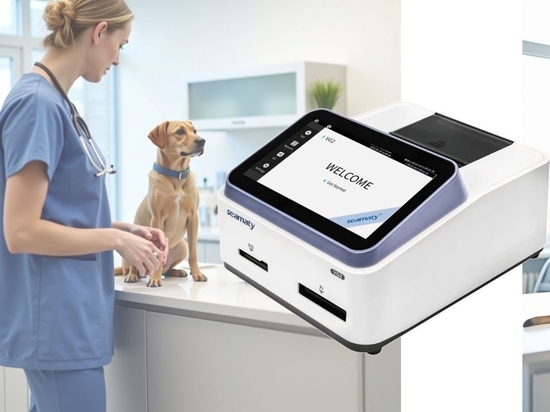
#Product Trends
12 FAQs of Seamaty SD3 Fully Automated Dry Chemistry Analyzer
Seamaty SD3
Introduction
The Seamaty SD3 is a cutting-edge dry chemistry analyzer designed to streamline biochemical testing processes. This innovative device leverages advanced microfluidic and dry biochemical analysis technologies to deliver accurate, efficient, and reliable results.
The purpose of this article is to address common questions and concerns regarding the Seamaty SD3, providing potential users with valuable insights into its capabilities and benefits.
FAQs of Seamaty SD3
1. What is the unique feature of the Seamaty SD3 compared to other dry chemistry analyzers?
The Seamaty SD3 features fan-shaped reagent disks, allowing for simultaneous testing of multiple samples or parameters on a single disk. This enhances efficiency and reduces reagent waste.
2. How does the Seamaty SD3 ensure accurate and precise results?
The device employs microfluidic technology to minimize sample volume and prevent cross-contamination. Additionally, the built-in diluent in the reagent disks ensures consistent results for whole blood samples.
3. What is the turnaround time for results using the Seamaty SD3?
The Seamaty SD3 provides real-time results, with a typical turnaround time of 9-12 minutes. This rapid turnaround time is beneficial for time-sensitive clinical decisions.
4. Is the Seamaty SD3 easy to operate and maintain?
The Seamaty SD3 is designed for easy operation, with a user-friendly interface and minimal maintenance requirements. It does not require complex sample preparation or extensive training.
5. What types of tests can be performed using the Seamaty SD3?
The Seamaty SD3 can perform a wide range of biochemical tests, including routine biochemistry, coagulation, electrolyte, lipid, cardiac, HbA1c, and CRP.
6. What is the sample volume requirement for the Seamaty SD3?
The Seamaty SD3 requires a minimal sample volume of 60-100 microliters per panel, making it suitable for various sample types, including pediatric and geriatric patients.
7. Can the Seamaty SD3 be used in point-of-care settings?
Yes, the Seamaty SD3 is a portable and compact device that can be used in point-of-care settings, such as clinics, emergency rooms, and remote locations.
8. How often does the Seamaty SD3 require calibration and maintenance?
The calibration and maintenance frequency for the Seamaty SD3 depends on factors such as usage and environmental conditions. However, the device is designed for minimal maintenance, with regular cleaning and periodic calibration checks.
9. What is the shelf life of the Seamaty SD3 reagent disks?
The Seamaty SD3 reagent disks have a shelf life of up to a year when stored at 2-8°C.
10. Can the Seamaty SD3 be integrated with laboratory information systems (LIS)?
Yes, the Seamaty SD3 can be integrated with LIS systems to streamline data management and reporting.
11. How does the fan-shaped reagent disk design improve efficiency and reduce waste?
The fan-shaped reagent disk design allows for the simultaneous testing of multiple samples or parameters on a single disk, reducing the need for separate reagent disks and minimizing reagent waste.
12. Can the fan-shaped reagent disks be used individually or in combination?
Yes, the fan-shaped reagent disks can be used individually to test a single sample or combined to form a circular disk for simultaneous testing of multiple samples. This flexibility provides users with the option to optimize testing based on their specific needs.
Conclusion
The Seamaty SD3 Fully Automated Dry Chemistry Analyzer with Fan-Shaped Reagent Disks offers a reliable and efficient solution for biochemical testing. Its advanced features, including microfluidic technology, rapid turnaround time, and ease of use, make it a valuable asset for healthcare professionals.





